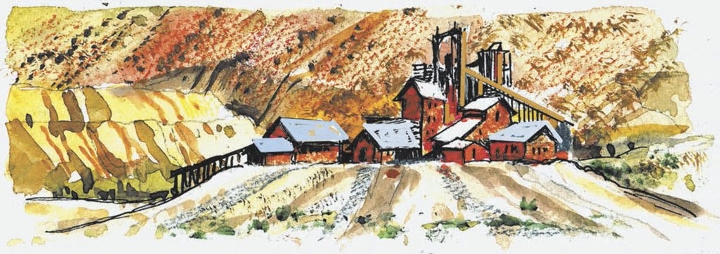Tonopah retains charm of boomtown days
Visitors to Tonopah return to yesteryear when they visit the old town's two award-winning museums, both open all year. The site of a fabulous mining boom in 1900, Tonopah boasts the Central Nevada Museum and the Tonopah Historic Mining Park, both multiple recipients of the Best Rural Museum award from Nevada Magazine.
Located 205 miles from Las Vegas on U.S. 95, Tonopah retains much of the flavor of its early 20th century boom years. Drive Tonopah's steep grid of streets in its historical core to spot many venerable commercial buildings and residences. Sadly, some are now boarded up, among them the handsome five-story Mizpah Hotel, closed for the past decade. Perhaps better times lie ahead for the Victorian-style hotel as it is slated to reopen this summer. Recently purchased by a California family of vintners with ties to early Tonopah, the newly renovated Mizpah could once again become a hub of activity for the old town.
As travelers drive into town, the Central Nevada Museum's main building and outdoor exhibits on the left side of the highway draw notice. The outdoor displays preserve several structures typical of the rude buildings hastily erected to house businesses and miners in Tonopah's early days. Founded in 1981, the Central Nevada museum is dedicated to the preservation of regional history. Open free of charge from 9 a.m. to 5 p.m. Tuesdays through Saturdays, except on holidays, the museum operates under the Central Nevada Historical Society and Nye County. Call (775) 482-9676 for more information.
The Central Nevada Museum's archives provide information vital to researchers. Its bookstore includes a treasure trove of Nevada history. Its displays and exhibits highlight various historical aspects, including the life of the nomadic native people, the ethnic makeup of early miners and townsfolk, and the history of the military in Tonopah. Visitors to the museum explore how people a century ago ranched, built railroads, fought fires, delved deep into the earth, kept the peace and entertained themselves.
The Tonopah Historic Mining Park perches upon 100 acres on a hill overlooking the highway, the original Nye County Courthouse, the Mizpah and other venerable downtown buildings. It preserves mining company structures and equipment from four major mines kept in a state of "arrested decay." The mining park stays open daily from 9 a.m. to 4 p.m., April through September, and from 10 a.m. to 4 p.m., October through March. For details, call (775) 482-9274.
Tonopah annually commemorates Jim Butler's discovery of rich silver and gold ore during Jim Butler Days on Memorial Day Weekend. Within a few months, Butler's strike generated extensive mining efforts, the prospecting of hundreds of square miles of Central Nevada and the construction of various railroad lines. See tests of traditional skills during the Nevada State Mining Championships at the mining park following the Saturday parade downtown.
First explore the main building with its gift shop and adjacent display rooms free of charge. Watch the introductory video, then head outside to start your self-guided tour. Use of the park's trails, including those open to mountain biking, costs $5 for adults and $3 for youngsters aged 7-12. No admission is charged for younger children, veterans or active members of the military. Motels in Tonopah offer overnight guests $1 coupons for park admission.
The walking tour includes about a mile and a half of trails. Steep sections with irregular stairs will prove difficult for handicapped visitors. Those with disabilities may opt to ride an ATV or drive to a central hoist house and mine sheds, including one displaying extensive rock samples and a black light exhibit.
This unique park offers views of open stopes hundreds of feet deep. The trail actually bridges one of these dark gaps while visitors in another area emerge from a short tunnel into a wire cage suspended over the void. Near a hoist house, below a stark header frame, peer through the cracks in the planks and smell the rank scent of explosives in the air wafting up from the deep shaft below, still acrid after many decades.
Margo Bartlett Pesek's column appears on Sundays.






















